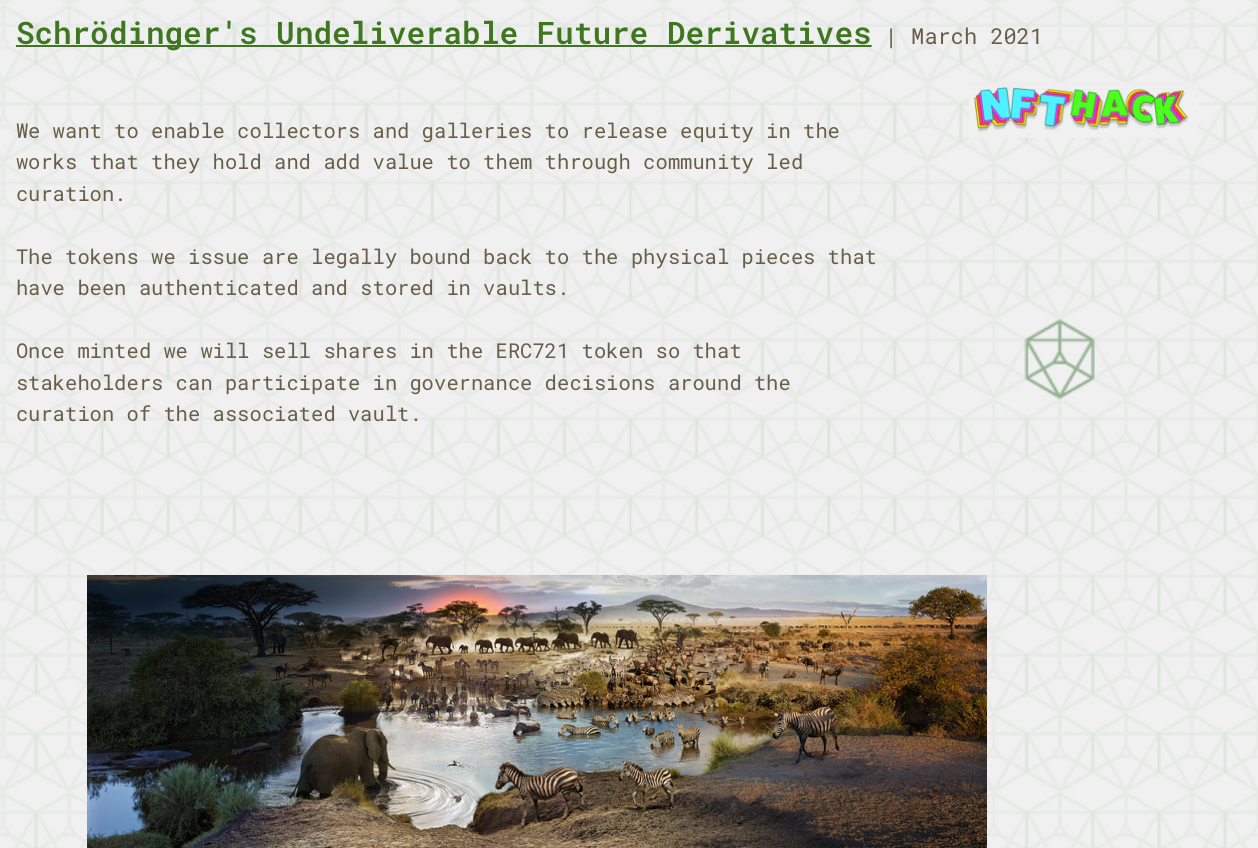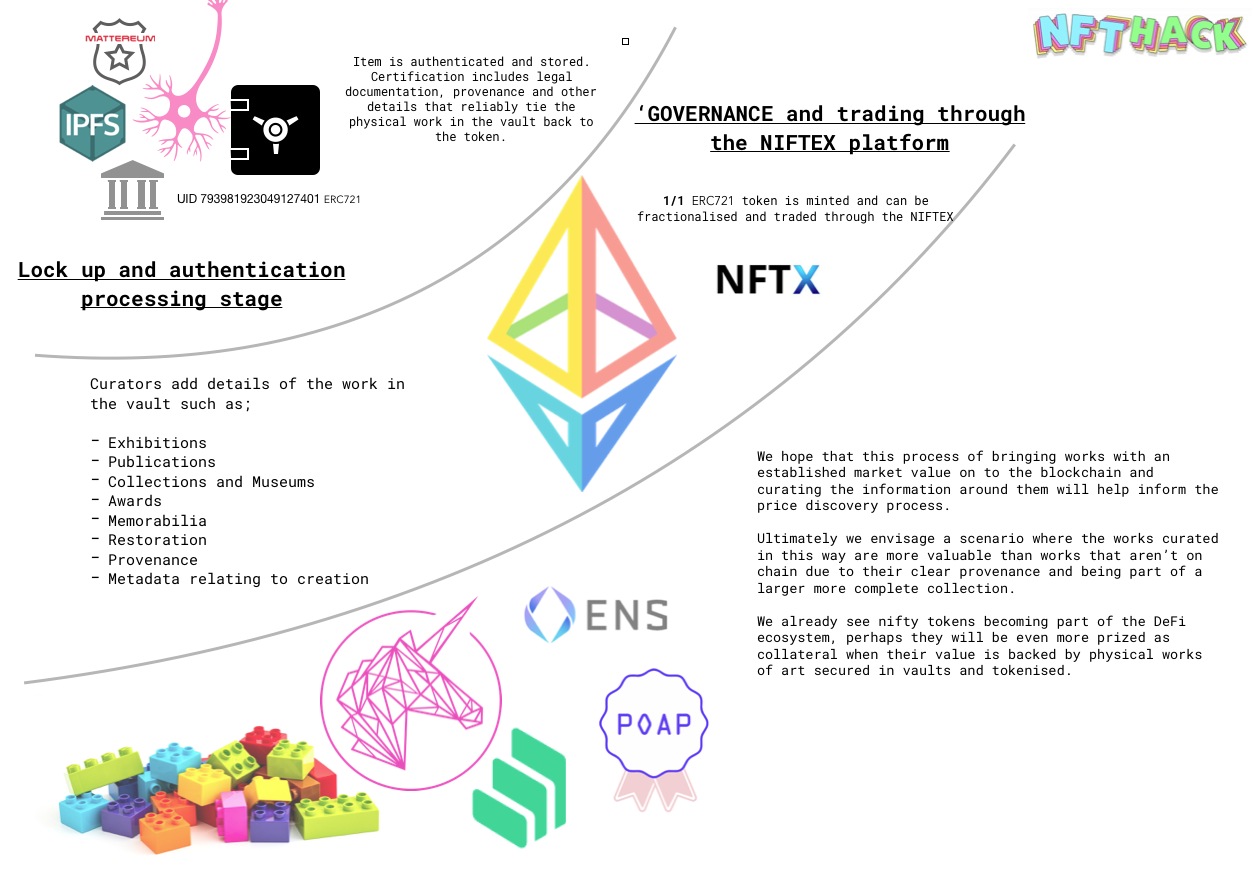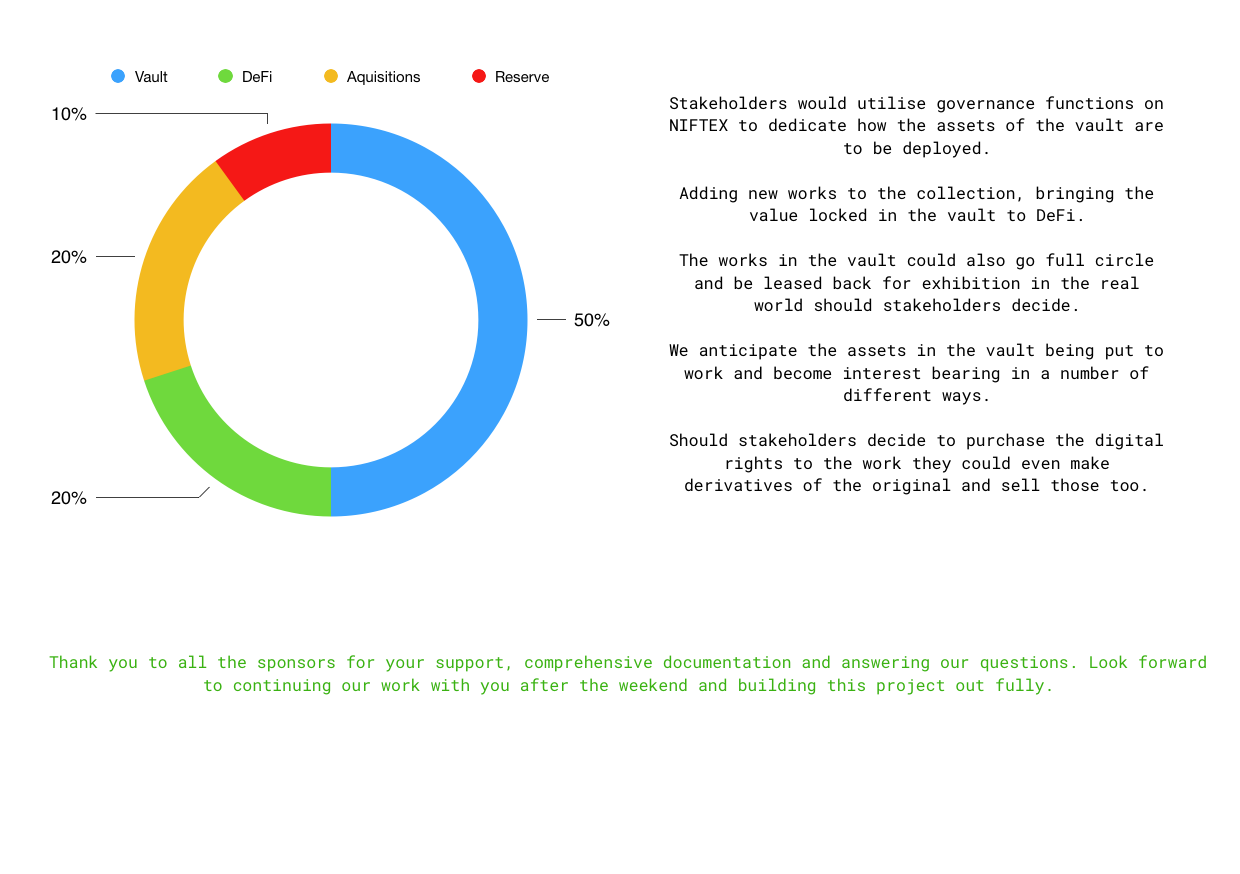Schrödingers Undeliverable Future Derivatives
Vault, decentralise trust, tokenise, add value, build collections
Project Description
Community curated collections that are legally bound to their digital counterparts on the blockchain.
The possibilities for token holders acting as curators of our vaults are truly immense.
We could see curators choosing to expand the collection in our example of this piece to the whole ‘Day to Night Series’ and forming a collection worthy of being leased back into the real world to galleries and museums that want an oversight of the work including all of the detail added.
Ultimately this is a project that will seek to prove that NFTs can add value to real world objects and release them to become interest bearing assets unto themselves for the benefit of the token holders by bringing them online. Stakeholders being curators of the works in the vault will mean they are incentivised to add more value and be rewarded.
If the curators decide to they could also purchase the digital rights to the original work and would then be able to manipulate and reproduce the image as much as they want. They could also choose to contact the studio that produced the work and ask for extra details that would add interest to the token.
NFT's without their physical counterparts could also undergo curation and ascribe credit to those that helped them make the piece. _
We want to enable collectors and galleries to release equity in the works that they hold and add value to them through community led curation.
The tokens we issue are legally bound back to the physical pieces that have been authenticated and stored in vaults.
Once minted we will sell shares in the ERC721 token so that stakeholders can participate in governance decisions around the curation of the associated vault.
How it's Made
Our project is hacking the real world as much as the digital to meld the two realities together.
Binding the token to the contents of the vault for example is predominantly a solution based in law and having the accuracy of the certificate independently verified relies on professional expertise. That decentralises the trust layer.
Once the token is minted and bound back to the vault/ contract/ certificate by their common UID the blockchain can take over. IPFS will play a key role in conserving all the details of the certificate.
Sharding the token on NIFTEX and utilising their Fixed Price Sales Module is when we really begin to see the possibilities of digitising an asset like this come to life. Stakeholders will be able to decide how to leverage the contents of the vault on or off chain, add contextual data or even other pictures, brochures, memorabilia etc
Distributing revenue earned by the token being utilised as collateral in the DeFi space or any subsequent monetisation of the assets in the vault would be done with SuperFluid.
We can anticipate using POAP to award stakeholders for exercising their rights to vote in governance decisions but really want to apply it in the real world. POAP would be used to confirm that the object is indeed still in its vault periodically. In the case that the collection is loaned back we hope people will use the protocol to verify that they have visited the collection for example.




